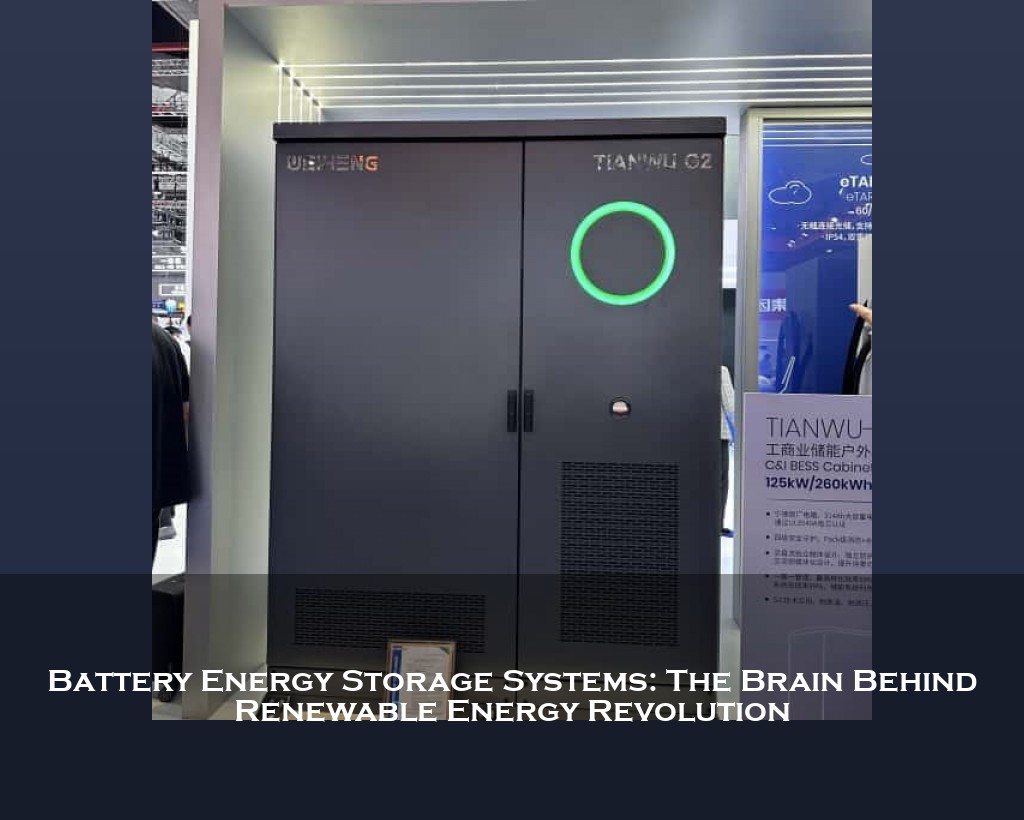Battery Energy Storage Systems: The Brain Behind Renewable Energy Revolution
Let’s cut through the jargon first. A Battery Energy Storage System (BESS) isn’t just a fancy battery pack—it’s the central nervous system of modern renewable energy setups. Imagine your smartphone battery, but scaled up to power factories, neighborhoods, or even entire grids. Unlike traditional power plants that generate electricity on demand, BESS stores excess energy when production exceeds consumption and releases it when needed. Think of it as a giant energy savings account with instant withdrawal capabilities.
Battery Energy Storage Systems: The Brain Behind Renewable Energy Revolution

Table of Contents
What Exactly Is a BESS?
Let’s cut through the jargon first. A Battery Energy Storage System (BESS) isn’t just a fancy battery pack—it’s the central nervous system of modern renewable energy setups. Imagine your smartphone battery, but scaled up to power factories, neighborhoods, or even entire grids. Unlike traditional power plants that generate electricity on demand, BESS stores excess energy when production exceeds consumption and releases it when needed. Think of it as a giant energy savings account with instant withdrawal capabilities.
Here’s the kicker: while lithium-ion batteries grab most headlines, a BESS combines four critical components:
- Battery cells (the muscle)
- Power conversion systems (the translator between DC and AC)
- Thermal management (the cooling system)
- Energy management software (the brain)
Why the Sudden Urgency for Energy Storage?
Remember the Texas power crisis of 2021? Or California’s rolling blackouts during heatwaves? These aren’t isolated incidents—they’re symptoms of aging grids struggling with climate change and renewable energy’s intermittent nature. Solar panels sleep at night. Wind turbines idle in calm weather. BESS bridges these gaps, turning sporadic generation into 24/7 reliability.
Consider this: global BESS installations skyrocketed by 87% in 2023 alone, with utilities investing $15 billion in battery projects. Why the gold rush? Simple economics. Pairing solar farms with BESS reduces energy waste by up to 40%, transforming renewable projects from eco-friendly gestures into profit centers.
The Nuts and Bolts: How BESS Actually Works
Let’s break down the magic behind the curtain:
Charging Phase
During sunny days or windy nights, excess electricity flows into battery cells. Advanced algorithms determine optimal charge levels to maximize battery lifespan—typically keeping cells between 20%-80% capacity.
Discharging Phase
When demand peaks or clouds roll in, the system converts stored DC power to AC electricity. Modern BESS can go from zero to full output in under 100 milliseconds—faster than you can say “power outage.”
The Secret Sauce: Predictive Analytics
Machine learning models analyze weather patterns, electricity prices, and usage histories. Some systems even track regional sports events (think Super Bowl commercials) to anticipate energy spikes.
When Theory Meets Practice: BESS in Action
Take Tesla’s Hornsdale Power Reserve in South Australia—the poster child for BESS success. This 150MW system:
- Reduced grid stabilization costs by 90%
- Prevented 8 major blackouts in its first year
- Paid for itself through energy arbitrage in just 2.5 years
Closer to home, Florida’s Babcock Ranch community uses solar+BESS to power 2,000 homes through hurricanes—a model that’s spreading faster than TikTok trends.
Beyond the Hype: What’s Next for Battery Tech?
While lithium-ion dominates today, solid-state batteries promise 500-mile EV ranges and 15-minute BESS charging by 2026. Sodium-ion alternatives could slash costs by 30% using abundant materials like table salt derivatives.
The real game-changer? Second-life batteries. Instead of recycling EV batteries at 80% capacity, companies like B2U Storage Solutions repurpose them for grid storage—imagine your old Tesla Powering Times Square billboards.
So here’s the million-dollar question: Is BESS a temporary fix or the backbone of tomorrow’s energy systems? Given its unique ability to democratize power distribution and monetize renewable excess, I’d bet my solar panels on the latter.
Related Contents

Battery Energy Storage Systems: The Brain Behind Renewable Energy Revolution
Let’s cut through the jargon first. A Battery Energy Storage System (BESS) isn’t just a fancy battery pack—it’s the central nervous system of modern renewable energy setups. Imagine your smartphone battery, but scaled up to power factories, neighborhoods, or even entire grids. Unlike traditional power plants that generate electricity on demand, BESS stores excess energy when production exceeds consumption and releases it when needed. Think of it as a giant energy savings account with instant withdrawal capabilities.

Battery Energy Storage Systems (BESS): The Brain Behind Renewable Energy Revolution
Ever wondered why your solar-powered neighborhood still needs fossil fuel backups? Battery Energy Storage Systems (BESS) hold the answer. As renewable energy capacity grew 95% globally from 2015-2023, we've hit an ironic bottleneck - the cleaner our grids become, the more unstable they get. Solar panels sleep at night. Wind turbines nap on calm days. This intermittency costs the U.S. power sector $120 billion annually in balancing services.

Battery Energy Storage Systems: Powering the Renewable Energy Revolution
our renewable energy storage infrastructure is kind of like a leaky bucket. We're pouring in solar and wind power faster than ever (global renewable capacity grew 50% last year alone), but without proper storage, we're losing precious resources. The real kicker? Utilities worldwide wasted enough clean energy in 2024 to power Germany for three months. That's where Battery Energy Storage Systems (BESS) come charging in.

Battery Energy Storage Systems (BESS): Powering the Renewable Energy Revolution
Let's cut through the jargon: Battery Energy Storage Systems (BESS) are essentially giant power banks for our electrical grids. Imagine being able to store solar energy captured at noon to power your Netflix binge at midnight – that's BESS in a nutshell. These systems combine advanced batteries with smart management tech to store electricity when production exceeds demand and release it when needed.

BMS in Energy Storage: The Brain Behind Renewable Energy Systems
A renewable energy farm in Texas loses 40% of its storage capacity within two years - not because of faulty batteries, but due to uneven cell degradation. This nightmare scenario explains why 68% of grid-scale storage projects underperform expectations, according to 2024 NREL data. The culprit? Inadequate battery management.
